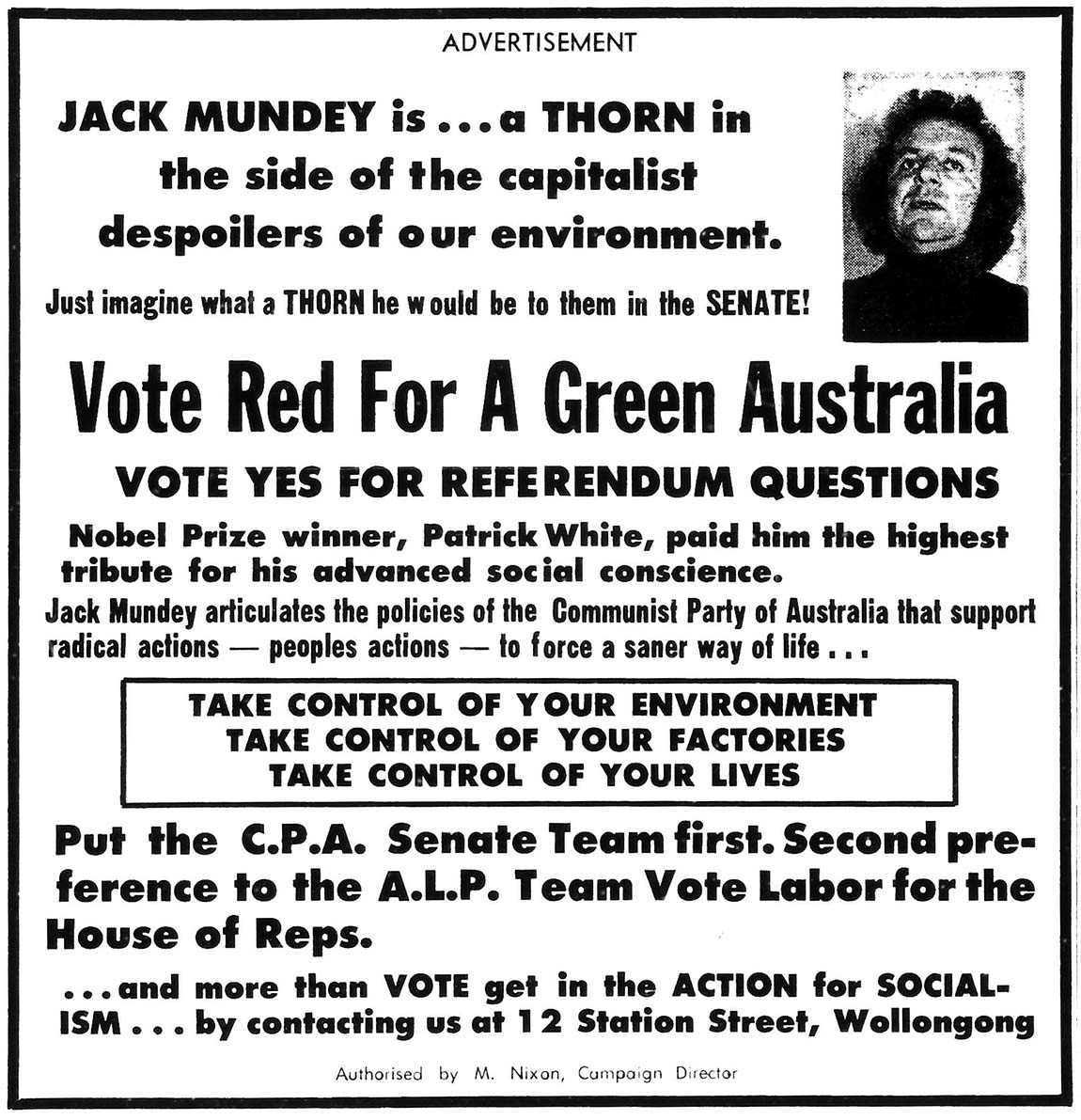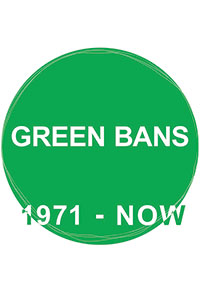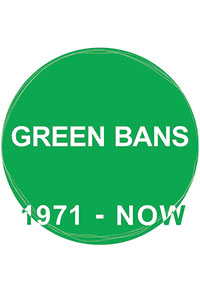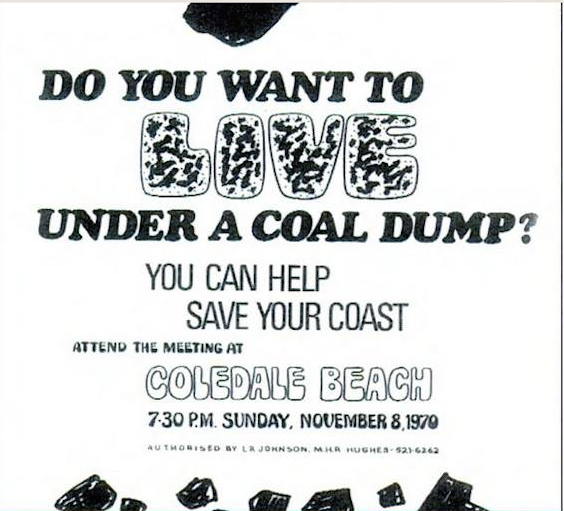The Fight for Illawarra: East Woonona & Port Kembla

Resident action group ‘Save Our Unpolluted Landscape’ (S.O.U.L) called a meeting on May 7th, 1974 to protest against sand dredging at Port Kembla Beach and a 15-storey high rise development near the Port Kembla Surf Club. In the previous decades, thousands of tons of sand been mined to be used in various construction works and exportation to Waikiki beach in Hawaii, devastating the once famous sand dunes of Port Kembla “with disastrous results” (Merv Nixon, June 1974). For instance, high tides were able to break through to the coal wash dump backing the beach, with the receding waters carrying debris and oil back into the sea to be washed up along the beachfront.
Concern was also expressed for potential dangers to the Coomaditchie Lagoon, a site of immense importance to the Indigenous community in the area. The Wadi Wadi people also possess a strong connection to the sand dunes around Port Kemba beaches which have been used as dwelling places and burial grounds for generations. Sand dredging in the 1970s seriously threatened the integrity of this environment and its cultural nuances.
Around the same time and just a few suburbs north, a similar meeting was called in East Woonona. On May 23rd, 1974 the RAG ‘East Woonona Progress Association’ was joined by local residents where they requested urgent union support to halt six development projects in the area. On July 2nd a ban was imposed on all high-rise and flat development, including major roads, and was to remain in place until residents were taken into consultation and involved in the future planning of the area.
The influence of the green bans movement on Illawarra was profound. The region’s political climate during the decades leading up to the 1970s fostered an environment in which the ideals and values of the BLF and unions could flourish. The 1938 Dalfram Dispute in Port Kembla influenced many of the political and governmental decisions that followed and fortified the socialist leanings of the region. The relationship between Illawarra and Jack Mundey was one of mutual respect and understanding.
In September 1970 Judy Gjedsted joined forces with university history professor Jim Hagan to battle against coal company Clutha Development. Earlier that year, news had broken that the NSW Liberal Government was working with the company on plans to build a new coal loading facility at Coalcliff, north of Wollongong, as well as a private rail line from the mines in the Burragorang Valley to intended storage yards on the coastline.
Residents rallied behind Gjedsted and Hagan to form the South Coast Organisation Opposing Pollution (SCOOP). Over 300 people attended the initial meeting at the local bowling club but the fight would carry on for half a decade. The defeat of the Clutha coal loading facility was official in 1975 after Pat Clancy, head of the BWIU, asserted his refusal to allow construction to go ahead.
Illawarra’s propensity for labour movements that engaged with and for the community did not end in the 1970s and it is always the workers and labourers who stand at the forefront of these battles. In 1988, the SCLC placed a ban on the building of gabion boxes at Hewitts Creek in Thirroul. The ban eventually collapsed though it sparked early fires in the fight for Sandon Point. Since 2001, another five green bans were imposed on key sites by the South Coast union movement: Sandon Point (2001), Regent Theatre (2004), Killalea State Park (2007), Wollongong Town Hall (2008) and Wollongong Harbour (2008).
References
The Illawarra Mercury: Surfers fear black beach, 7 May 1974; Unions’ pledge to save beach, 8 May 1974; Building freeze proposal, 8 May 1974; High-rise protest: urgent talks at Woonona, 20 May 1974; North’s high-rise ‘freeze’ possible, 24 May 1974; Govt considers beach problem, 6 June 1974; AWU may join beach sand fight, 18 June 1974.
Interviews and correspondence
Aunty Lorraine Brown (CUAC) interviewed by Isabella Maher, 17 June 2021; Arthur Rorris (SCLC) interviewed by Isabella Maher, 3 August 2021; Joseph Davis (historian) correspondence with Isabella Maher, 7 August 2021.



